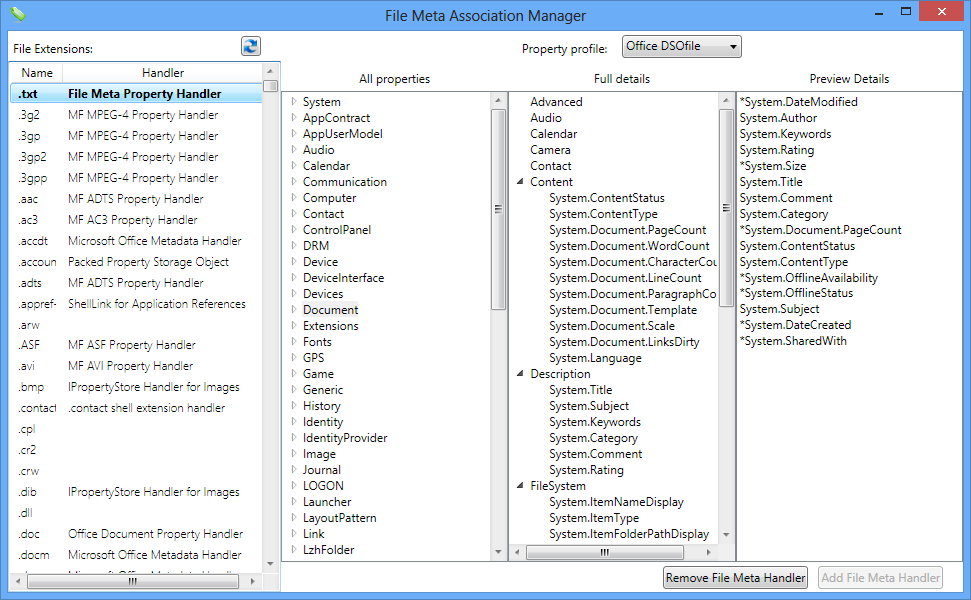Windows Explorer has displayed file metadata for a very long time. Click an image, say, and you'll see (and have the option to edit) details like the picture title, author, comments, camera manufacturer, model and more. This allows you to record useful extra information about each file, and is also used by Windows Search, so for instance searching for "Title:Fiji" would locate all files with "Fiji" in the title.
Ever since Windows Vista, though, metadata has been restricted to just a few file types: images, MP3's, Office documents and so on. But it doesn't have to be this way. Install File Metadata and you'll be able to create, view and edit metadata for just any file type you like.
Once installed, you have to turn on metadata for new file types via the program's File Association Manager. This looks horrific, with long lists of possible properties and their various details, and will probably scare off many potential users immediately. But don't panic, it's not as bad as it seems.
If you want to add metadata support for text files, say, then all you have to do is scroll the left-hand "File Extensions" list, select the TXT file type, and click "Add File Meta Handler". Clicking a TXT file in Explorer should immediately display metadata for that file (if not, make sure the Explorer Details pane is displayed), and you'll be able to add a title, comments, category, subject and more (if you get an error message, restart your PC and try again).
Once you get past the intimidating File Association Manager and realise how simple it is, File Metadata works just fine, and is a great way to help classify and locate your files.
But beware, one reason Microsoft dropped this feature from Windows Vista is that your metadata can be "lost". The tags are stored as NTFS properties, and so disappear if, say, you move your files to a FAT-based file system, or email them to someone. This won't be a critical problem for everyone, but you do need to be aware of it, and we'd recommend careful testing before you start creating metadata for a large number of files.
Version 1.3 changes:
- Allow the use of File Meta when there is already a property handler installed. The existing property handler is used to read existing metadata, but all new or updated metadata property values are written to the alternate stream store used by File Meta. The existing Preview Panel and Details properties are used as a starting point to which any other properties desired can be added. Before using this feature, I recommend reading Using the File Meta Association Manager to make sure you understand exactly what is going to happen, and how to make it work for you.
- Support the configuration of the properties shown in the Info Tip displayed when the mouse hovers over a file in Explorer.
- Provide command line support for the capabilities of the File Meta Association Manager.
- Support 32-bit application access to File Meta property values on 64-bit systems. The application most commonly affected is Office.
Verdict:
The interface needs simplifying, but otherwise File Metadata is a neat Explorer extension which helps you work with metadata for any file type





Your Comments & Opinion
I tested with a .txt file. If any letter in the extention is upper case, the file meta data is editable. However, if all lettrs in the file extention are in lower case, the meta data is not editable AND the previous inputed meta data information is missing . Looks like that the software treated lower case extention file as a different type of file.
I tested the above with Windows7 Chinese version.
View, organise and manage your media files
Get your digital image collection in order with this free photo manager
Find missing software updates
A notepad/ to-do tool with cloud sync
Manage your files and folders with this dual pane tabbed Explorer replacement
Ditch the ZIP format and move your archives to the more impressive 7Z
Ditch the ZIP format and move your archives to the more impressive 7Z